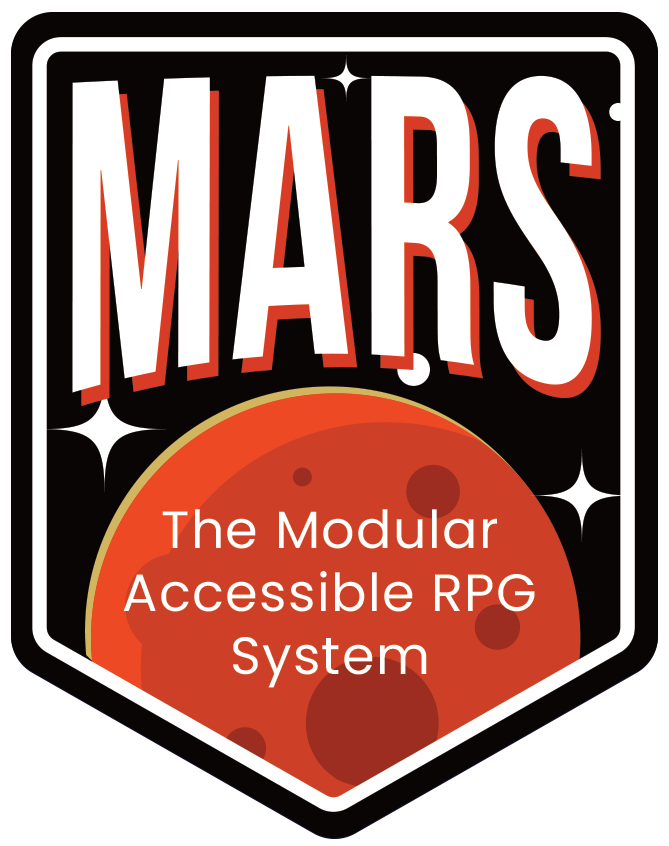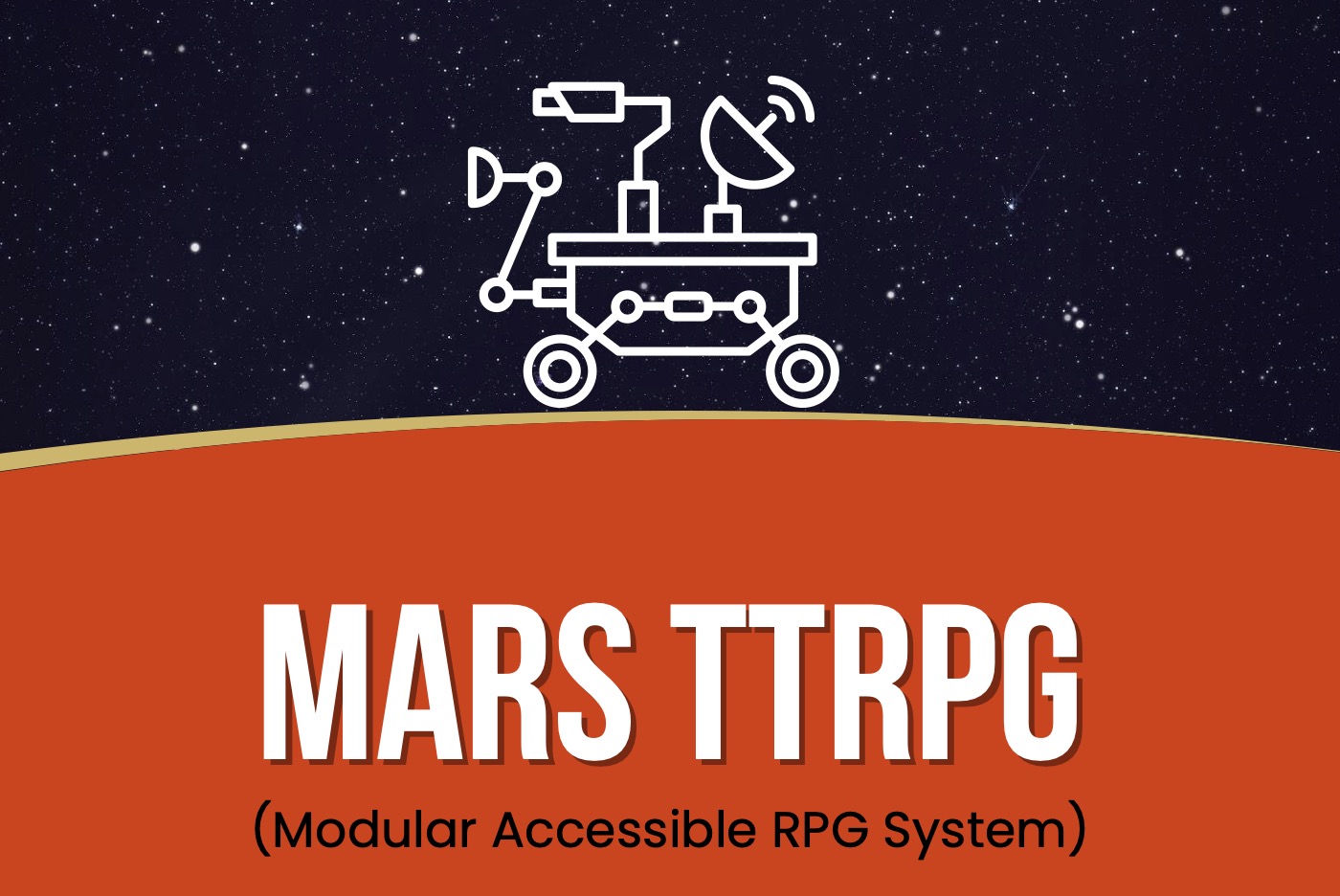Introduction
Conflicts are a form of Turn-Based Competition, essentially just turn-based Mighty Feats with Progress Points being referred to as Resilience Points (aka Hit Points).
Starting Conditions
Conflicts occur when a Player or NPC decides to attack. Play then continues in Rounds where each Player gets a turn.
Stress and Resilience
Each Player starts with 80 Resilience Points, which can be reduced by taking Stress. The main way to progress a conflict is to deal Stress to your opponents through Actions and effects, and avoid having Stress dealt to you.
When a Player’s or NPC’s Resilience reaches 0, they are taken out of the conflict until they are healed by another competitor or effect.
Simple Conflicts
As per any MARS Ruleset, each section of rules can be introduced one at a time (which is great for new Players). For example, even without this Mode you can run Simple Conflicts using the Core Rules alone.
Players would just call out whatever creative Actions they choose to neutralise their opponents, and every now and then the GM interjects with enemy Actions.
Then after introducing Turn Order, your players can now take Turns doing that. After introducing Action Points, Players now get 3 Actions each Round and can act outside of their Turn as a Reaction. Next you add the concept of tracking Movement during Conflict and more complex and spatially-oriented conflicts can occur. As GM you are empowered to choose the level of complexity needed for your group and encouraged to introduce new rules gradually.
Turn Order, Actions Points, Movement and mapping
All as per the Turn-Based Competition Module.
Each Player and NPC/enemy has 3 Action Points (AP) they can spend each Round on Actions and/or Reactions.
For fun, consider that hordes of low-level enemies (aka Goons) could have just 2 AP and 1 RP and allow your Players to mow through them.
Burnout
Now that APs have been introduced, when a Player’s Resilience reaches 0, they are considered Burnt Out. They can still use 1 AP per turn, including healing themselves or other non-Stress Dealing Abilities. They cannot Attack and can only Move 5ft/turn. If your group/game has opted to go ‘Hardcore’, then roll for ‘Death Saves’ each turn as per DnD 5e.
End States
The Sides in a Conflict are sometimes explicit, but more often just implied, and they can even change during a Conflict. So the easiest way to determine End State conditions is this:
Once there is no one left who wants to (or can) attack another Player or NPC, the Conflict is over.
In other words, once all your enemies have 0 Resilience Points left or they Concede, you Win. The winning party then decides what happens with the losing or conceding party.
This should align with the tone of your game or Setting (e.g. in a PG rated Setting, the losers are not getting violently slaughtered, instead they may be captured or they may be considered out of action and even fail their broader mission).
Negotiation
As per the Turn-Based Competition Module, if all Sides agree to mutual de-escalation, then the Conflict can end with a Win-Win condition.
Actions and Reactions in detail
The below Action and Reaction Types are provided as prompts and suggestions. The short version is this:
You can do anything at any time, except you can only Attack or actively trigger Stress-Dealing Abilities on your Turn. And moving outside of your Turn is at half-speed.
Note: Stress-Dealing Abilities that trigger passively in response to other Players, NPCs or the environment can still deal Stress at any time. E.g. If your Character has a ‘Thorns’ Ability which reflects Stress taken back at the attacker, that will still happen outside of your Turn because it’s a passive Ability.
Action Types
- Attack / Trigger a Stress-Dealing Ability.
- Melee Attacks: have a range of 5 feet.
- Projectile Weapon Attacks: Can travel 60 feet or 120 feet with Disadvantage (i.e. -1 dice from your pool, or roll 2d20s and take the lowest number).
- Improvised Projectile Attacks: Can travel 30 feet or 60 feet with Disadvantage (i.e. -1 dice from your pool, or roll 2d20s and take the lowest number).
- Move: Up to 30 feet per Action (total of 60 feet per Round) shared with Reactions.
- Any other creative Action or Ability: Including negotiation
- Pass, save your Action Points for Reactions later this Round.
Reaction Types
- Move: At ‘half-speed’ (i.e up to 30ft shared with Actions). Can be used to take a bullet for an Ally by throwing yourself in front of them and pushing them back 5ft. You take the damage from the enemy attack.
- Dodge/Defend: Reduce damage taken from the first attack you suffer by half
- Attack of Opportunity: Made at Disadvantage (i.e. remove one dice from your pool) if an enemy moves away from you.
- Creatively Collaborate: With another person’s Action (granting them extra dice).
- Any other creative Action or Ability: Including negotiation, just not Attack or use Stress-Dealing Abilities.
Resolving Attacks
When a Competitor Attacks, they:
- Specify a Target: Usually an enemy Competitor.
- Describe your Action: Choose what type of creative Attack they are making, and pick the relevant Skill they are using—i.e. Physical for a strike, Emotional to scare, Social for a taunt, Intellectual to confuse them.
- Roll to Hit: Roll against that Threshold to see if you Successfully Hit with their Attack.
- Roll for Impact: Players then roll Successful d20s again (i.e. Impact Score) to determine how much Stress they inflict against their target’s Resilience Points.
The GM will track how many Resilience Points remain for each enemy and let you know when they have no more and what happens to them then.
Note: As per some Mighty Feats, some enemies may reset/heal their Resilience Points between attacks. This encourages big collaborative attacks, rather than chipping away at an enemy.
Now go play!
You can run games now that involve compelling Conflict. If you’d like to explore mechanics that encourage deeper Character growth, read on to the Integration Module.

